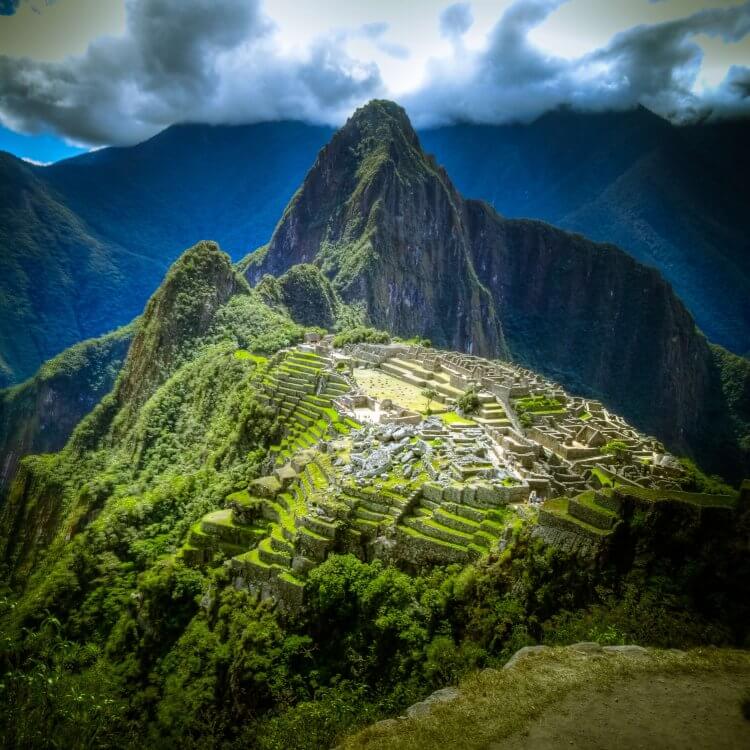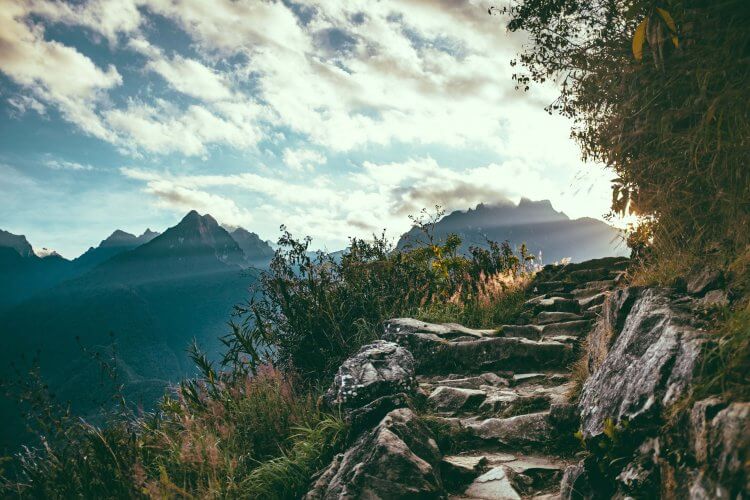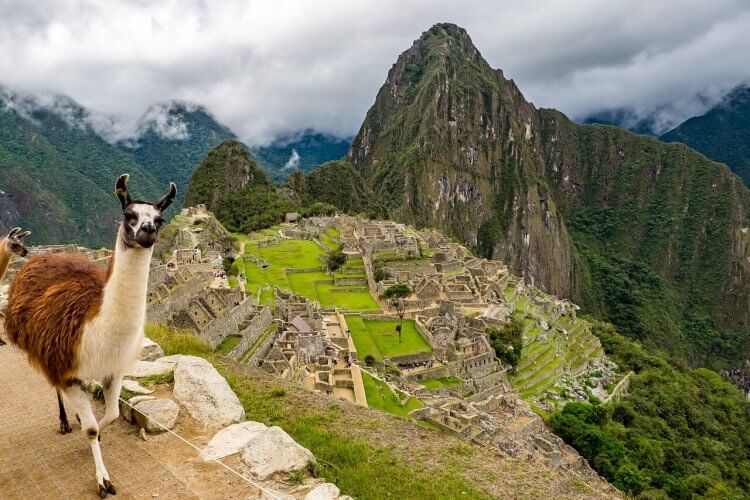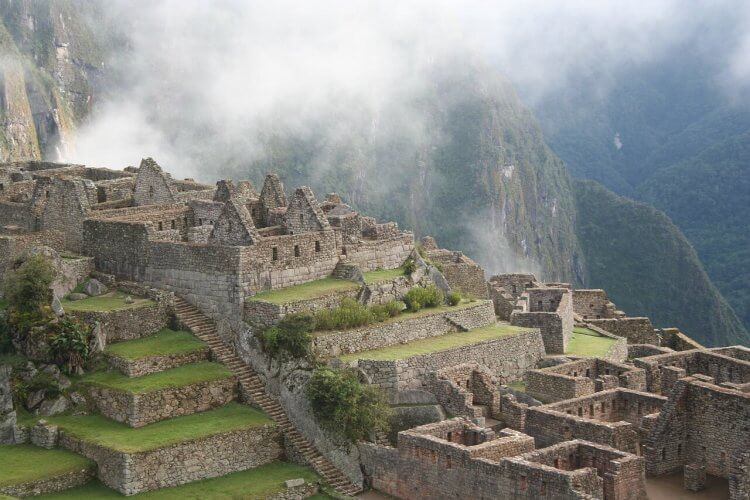By Road and Foot to Machu Picchu

Machu Picchu is the stuff that any traveller’s dreams are made of, and features on the majority of bucket lists. Pictures of the mountaintop city are so breath-taking that thousands of people flock to the site on a daily basis, wanting to witness the majesty for themselves.
True, the Inca Trail is the ultimate way to reach the mystical mountain-top city of Machu Picchu, but it does involve a fairly intense climb over a few days and is so popular that you normally have to book it pretty far in advance.
Whilst this is great for people visiting Peru on a short trip with the set goal of doing the trek and reaching Machu Picchu, the average backpacker wending their way around South America often isn’t on a particularly tight schedule.
They can’t predict a few months in advance when they’re going to arrive in Cuzco, the city from which all trips set out.
The other option for those with plenty of cash is the train. There’s a direct train from Cuzco to Aguas Calientes, the village at the bottom of the dramatic gorge, nestled far below Machu Picchu itself, so you can get there and back in a day.

However, whilst the views are beautiful and it’s an efficient way of doing things, it sure ain’t cheap by anyone’s standards, let alone Peruvian ones.
So what’s the budget backpacker who’s flying by the seat of their pants to do? Luckily, there is another way.
A Mini Bus and Your Own Two Feet
As you walk the streets of Cuzco, there will be plenty of small travel agencies trying to sell you this deal, which is either two days and one night or three days and two nights by ‘car’ and on foot.
This is how it works:
You’re picked up by minibus from your accommodation with just a small backpack rather than all your stuff (you’ll be able to store your things at your hostel and grab them when you get back). The drive takes a few hours, wending around to the back of the chain of mountains amongst which Machu Picchu is nestling.
The journey ends with a pretty interesting drive along a dirt road with some fairly vertiginous drops. They don’t seem to bother the drivers who do this on a daily basis so they go at quite a speed, meaning that if you scare easily this might not be for you. You eventually get dropped off at the end of the railway line.
The walk takes you up the side of the raging Urubamba river that carved out this dramatic landscape, along the edge of the railway tracks. The trains are, thankfully, slow-moving and it’s difficult not to notice them coming, so you can safely get yourself off the tracks in time.

You catch glimpses of a few ancient buildings perched on the top of the cliffs, hundreds of metres above you, from certain points on the walking route.
Eventually, you come to Aguas Calientes and track down your group for the dinner, which is normally included. You’ll be pointed towards your allocated hotel, and will want an early night, as you’ll be up at the crack of dawn to reach Machu Picchu itself in time for your guided tour.
The Big Day
It’s time to see Machu Picchu with your own eyes!
You’ll be given your exact tour time and the time that the park opens by your guide at dinner, but you’ll definitely be up and out well before dawn. Join the queue at the park gates to have your ticket checked, and then begin the long, hard climb up the hill.
You’re pretty much climbing directly upwards for a kilometre, so you do need to have a reasonable level of physical fitness to manage it.

There’s also the option of taking the bus up the hill, but it is fairly expensive, so it’s not something the average budget traveller will be able to afford. That and the walk is all part of the adventure and gives you a taste of what the full Inca Trail might be like. If you’ve got any health issues, however, definitely opt for the bus. It’s a very long way up!
You’ll meet your tour group at the top and head off for your guided tour. Expect a fairly large group (this is the budget option, after all), but you should still get a very good picture of the fascinating history of this place, which isn’t as old as you might think. It was built in the 15th century and abandoned a mere century later due to the Spanish conquest.
You’re then free to spend as long as you want to roam the site, and you will need a good few hours to do it all justice. Take the long walk up to the Puerta del Sol for views back down over the city.
Get away from the crowds by losing yourself amongst the ruins, listen in to other people’s guided tours for some extra facts, and make friends with a few llamas. Find somewhere to sit and watch the rain clouds drifting across the valley. You won’t be short of photo opportunities, that’s for sure.
They know how to charge for food at the top, so make sure you’ve brought snacks up the mountain with you so that you have the energy to keep exploring.

You’ll probably have run out of energy by early afternoon, and then there’s the long walk back down the way you came up, which can be hard on the knees.
If you’ve chosen the one night option, then you won’t be able to stay as long at Machu Picchu itself as you’ll have to get back down and do the walk back to the starting point that same afternoon, getting there at a set time.
If you have an extra night, it can all be far more leisurely. If you’ve got the time, I’d definitely recommend doing it.
You’ll probably need a nap when, but then the hot springs that the village is named after will call your name. Soothe those aching muscles in the bubbling, sulphurous water that’s pumped into the pupose-built swimming pools.
Dinner usually isn’t included on the second night, but there are plenty of restaurants competing for your business. Reward yourself for all that exercise by indulging in a couple of cocktails at happy hour.
You’ll be given a set time that you need to be back at the drop-off/pick-up point the next day, and you’ll have to judge for yourself what time you need to set off from Aguas Calientes. You’ll be herded onto a mini bus, and back to Cuzco you go.
What to Take With You
There’s only room for a daypack on this trip, and that’s all you’ll want to carry on the long walk. I found it was best to stick to one pair of trousers that are comfortable to walk in, and just take a couple of changes of t-shirt. You might feel a bit grotty by the third day, but everyone is in the same boat.
Take a waterproof or poncho, as there are constant showers, and don’t forget to take plenty of warm layers (preferably including a scarf, gloves and hat), as it will be freezing when you get up at the crack of dawn to join the queue.
However, you will then get very hot and sweaty on the climb and it’s hot up on the mountain in the glare of the midday sun, so you need to be able to strip a few layers off.
Don’t forget your swimming costume if you’re planning on having a dip in the hot springs. You’ll probably be provided with a towel at your hotel that you can use for this, but if you have a sarong bring it along, as it doesn’t take up much space and is quick-drying.
The most important thing is that you wear a pair of supportive, comfortable trainers or walking boots, as you’ll be on your feet non-stop for the whole trip.
Packing List:
- Socks
- Underwear
- 1 pair comfortable trousers
- ¾ t-shirts
- Warm layers and jacket
- Waterproof
- Hat, gloves, scarf
- Swimming costume
- Sunglasses
- Basic toiletries
- Optional: Sarong
- Camera
- Snacks
- Water
You won’t forget this trip in a hurry. There’s nothing else in this world quite like seeing those ruins in that unparalleled setting. Make sure you take your camera, but keep your eyes wide open and be sure to really experience the moment, too.